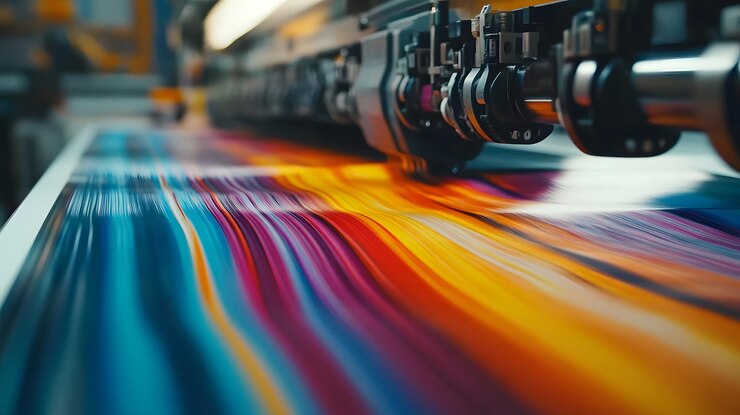The concept of print media sustainability is becoming increasingly important in today’s world. With the ever-growing focus on environmental preservation, the printing industry is under pressure to adopt more sustainable practices. Print media sustainability is not just a trend; it is a pivotal shift towards ensuring a greener and more sustainable future.

Understanding Print Media Sustainability
Print media sustainability refers to the practice of using eco-friendly methods and materials in the production of printed materials. This includes everything from the type of paper and ink used to the processes involved in printing. The goal is to minimize the environmental impact and reduce the carbon footprint associated with traditional printing methods.
Why is Print Media Sustainability Important?
As the world grapples with climate change, industries are being called upon to reduce their environmental impact. The print media industry is no exception. By adopting sustainable practices, the industry can significantly reduce its carbon footprint, conserve resources, and contribute to a healthier planet. This not only benefits the environment but also enhances the industry’s reputation among consumers who are increasingly concerned about ecological issues.
Eco-Friendly Materials in Print Media
One of the key aspects of print media sustainability is the use of eco-friendly materials. This includes recycled paper and soy-based inks. Recycled paper reduces the demand for virgin paper, thus conserving trees and reducing deforestation. Soy-based inks, on the other hand, are biodegradable and less harmful to the environment compared to traditional petroleum-based inks.
Reducing Waste in Print Media
Waste reduction is another crucial component of print media sustainability. By optimizing printing processes and using digital printing technologies, companies can reduce waste and improve efficiency. For example, the adoption of zero waste printing processes can significantly minimize waste output.
Technological Innovations Supporting Sustainability
Technological advancements play a vital role in promoting print media sustainability. The integration of AI in printing technology has enabled more efficient production processes, reducing energy consumption and material waste. Additionally, the use of 3D printing technology is revolutionizing the industry by allowing for precise material usage, thus minimizing waste.
The Role of Renewable Energy
Embracing renewable energy sources is another way the printing industry can promote sustainability. By utilizing solar, wind, or other renewable energy sources, printing companies can reduce their reliance on fossil fuels and decrease their carbon emissions. This shift not only benefits the environment but also helps companies save on energy costs in the long run.
Challenges in Achieving Print Media Sustainability
Despite the benefits, achieving print media sustainability is not without its challenges. The initial costs of adopting sustainable practices can be high, deterring many companies from making the switch. Additionally, there is a need for industry-wide collaboration to establish standardized sustainable practices and encourage widespread adoption.
Overcoming Financial Hurdles
To overcome financial barriers, companies can seek government incentives and grants aimed at promoting sustainable practices. Additionally, investing in sustainable technologies can yield long-term savings, offsetting the initial costs.
Collaboration and Industry Standards
Collaborative efforts between industry stakeholders are crucial in establishing and promoting sustainable practices. By working together, companies can share knowledge, resources, and technologies to drive the industry towards a more sustainable future.
The Future of Print Media Sustainability
The future of print media sustainability looks promising. With continuous advancements in technology and growing environmental awareness, the industry is poised for a sustainable transformation. As more companies adopt eco-friendly practices, the collective impact on the environment will be significant, paving the way for a greener future.
Consumer Awareness and Demand
As consumers become more conscious of environmental issues, the demand for sustainable products, including print media, is on the rise. Companies that embrace sustainability can not only meet this demand but also enhance their brand reputation and customer loyalty.
Regulatory Support and Policies
Government regulations and policies play a crucial role in promoting print media sustainability. By implementing stricter environmental regulations and offering incentives for sustainable practices, governments can encourage more companies to adopt eco-friendly methods.
Conclusion
In conclusion, print media sustainability is an essential aspect of the printing industry’s future. By adopting eco-friendly practices, utilizing technological innovations, and collaborating with industry stakeholders, the industry can significantly reduce its environmental impact. This not only benefits the planet but also aligns with the growing consumer demand for sustainable products. Embracing print media sustainability is not just a responsibility; it is an opportunity for the industry to lead the way towards a greener future.

FAQ Section
What is the main goal of print media sustainability?
The main goal of print media sustainability is to reduce the environmental impact associated with traditional printing methods by adopting eco-friendly practices and materials.
How does technology support print media sustainability?
Technology supports print media sustainability through innovations like AI and 3D printing, which enhance efficiency, reduce waste, and minimize energy consumption.
What challenges does the industry face in achieving sustainability?
The industry faces challenges such as high initial costs and the need for collaborative efforts to establish standardized sustainable practices.
How can companies overcome financial barriers to sustainability?
Companies can overcome financial barriers by seeking government incentives, grants, and investing in sustainable technologies that offer long-term savings.
This article contains affiliate links. We may earn a commission at no extra cost to you.






